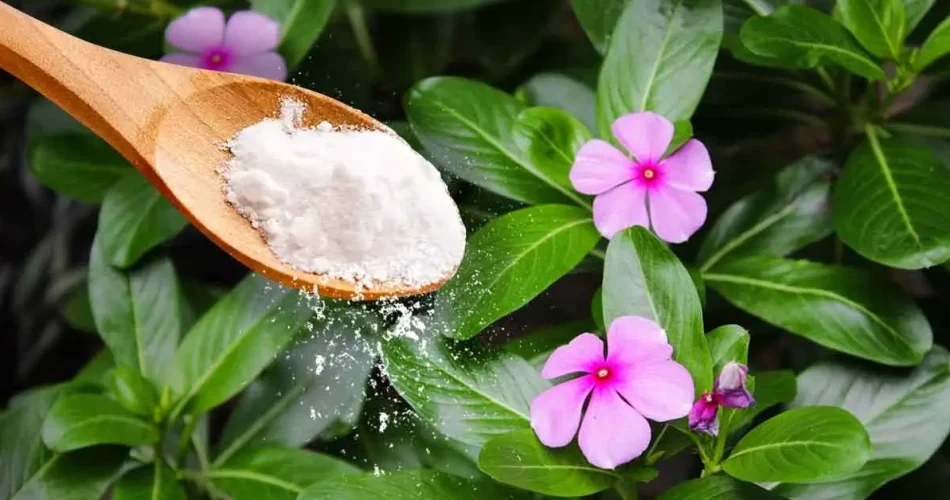Baking soda, also known as sodium bicarbonate, is a versatile and effective product for caring for your plants and garden. Here are some of its uses, dosages, and benefits:
1. Fungal Infections:
- Mix 1 liter of water with 1 teaspoon of baking soda and 3 teaspoons of olive oil or horticultural oil in a bowl.
- Transfer the mixture to a spray bottle and apply it directly to plants affected by fungal infections, ensuring complete coverage.
- This solution helps eliminate fungi and prevent their spread. Apply weekly, especially in cool, humid conditions.
2. Insect Repellent:
- Sprinkle baking soda in areas where insects are present, such as garden beds or around plants.
- The smell of baking soda repels insects like cockroaches, ants, and slugs, helping to keep them away from your garden.
3. Cut Flower Preservation:
- Add a teaspoon of baking soda to the water in a vase containing cut flowers.
- Baking soda helps flowers stay fresher for longer by reducing bacterial growth and maintaining water pH.
4. Weed Control:
- Sprinkle baking soda between garden slabs or in areas where weeds tend to grow.
- Baking soda can help suppress weed growth and slow down their proliferation in your garden or vegetable patch.
5. Soil pH Adjustment:
- Sprinkle baking soda around tomato plants to reduce soil acidity levels and enhance the sweetness of the fruits.
- Apply baking soda halfway through the growth of tomatoes for optimal results.
6. Compost Odor Control:
- Add 2 tablespoons of baking soda to your compost pile to neutralize odors and promote decomposition.
- Baking soda helps eliminate unpleasant smells, making your compost more pleasant to work with.
Dosage and Application:
- For fungal infections: 1 teaspoon of baking soda per liter of water, mixed with 3 teaspoons of oil (olive or horticultural).
- For insect repellent: Sprinkle baking soda in affected areas as needed.
- For cut flower preservation: 1 teaspoon of baking soda per vase of water.
- For weed control: Sprinkle baking soda between garden slabs or in weed-prone areas.
- For soil pH adjustment: Sprinkle baking soda around tomato plants as needed.
- For compost odor control: Add 2 tablespoons of baking soda to your compost pile.
Note: Always test baking soda solutions on a small area of your plants before widespread application to ensure they do not cause any adverse effects. Additionally, avoid using baking soda in excessive quantities, as it may alter soil pH levels drastically.
Show Comments



